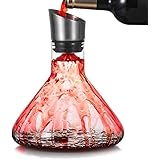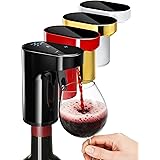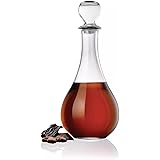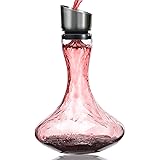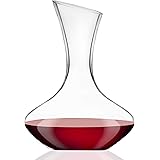Are you an avid homebrewer curious about venturing into the world of winemaking? Or perhaps you’re simply eager to craft your own delicious wines but feel daunted by the process? You’re not alone! Many aspiring vintners believe that making wine is far more complex or finicky than brewing beer. However, as Kyle Leerhold demonstrates in the video above, starting your first batch of wine from a kit can be surprisingly straightforward and incredibly rewarding.
This guide will expand upon Kyle’s excellent introduction to a beginner’s wine kit, offering deeper insights into the process, equipment, and ingredients. We aim to demystify home winemaking, making it accessible for everyone from seasoned brewers to complete novices.
Demystifying Home Winemaking with a Kit
The perception that making wine is difficult often stems from images of traditional vineyards and complex cellar operations. Yet, modern wine kits simplify this significantly. These kits are meticulously formulated to provide everything you need for a successful fermentation, eliminating much of the guesswork. They truly make home winemaking an achievable and enjoyable hobby.
A wine kit takes the initial challenges out of the equation. You won’t need to press grapes, adjust acidity, or measure out complex nutrient schedules. Instead, you’re provided with a concentrated juice base and pre-measured adjuncts, allowing you to focus on the fermentation process itself. This approach makes starting a wine kit fermentation much less intimidating, paving the way for a smooth, rewarding experience.
Unpacking Your Wine Kit: Essential Components
When you open a typical beginner wine kit, you’ll find several key components. Each plays a vital role in transforming simple juice into a complex, delightful wine. Understanding these ingredients helps in appreciating the magic of fermentation.
-
Concentrated Grape Juice: This is the heart of your wine. It’s a highly concentrated form of grape must, which will be diluted with water to reach the appropriate volume and sugar concentration. The quality and type of concentrate dictate the varietal character of your finished wine, from crisp Chardonnays to bold Cabernet Sauvignons.
-
Yeast: Wine yeast is specifically cultivated to ferment grape sugars efficiently, producing alcohol and unique flavor profiles. Unlike wild yeasts, commercial strains provide consistent results and minimize off-flavors. Typically, dry yeast is included, ensuring a long shelf life and easy activation.
-
Fining Agents: These are crucial for clarifying your wine. Kyle mentions Bentonite, a type of “brewer’s clay,” which helps remove suspended particles, proteins, and tannins, leading to a clearer, more stable wine. Other fining agents like Kieselsol and Chitosan may also be included, working in conjunction to polish the wine’s appearance.
-
Stabilizers (Potassium Sorbate & Potassium Metabisulphite): Potassium metabisulphite serves multiple purposes; it acts as an antioxidant, protecting your wine from spoilage, and also helps to sanitize equipment. Potassium sorbate prevents re-fermentation in bottled wine, especially if residual sugars are present, ensuring your sweet wines stay sweet and don’t create unexpected pressure in bottles.
-
Oak Chips: These chips are added to impart complex flavors and aromas, mimicking the effect of barrel aging. Oak can contribute notes of vanilla, toast, spice, and even subtle nutty characteristics, enhancing the wine’s body and mouthfeel. The quantity, like the 60 grams Kyle used, is carefully measured for balanced flavor.
-
Instructions: Always read these thoroughly! They are specifically tailored to your kit and provide precise steps for optimal results.
Essential Equipment for Starting Your Wine Kit
Having the right tools makes the making wine process smoother and more enjoyable. While some items might cross over from beer brewing, there are a few specifics for wine.
-
Primary Fermenter (6-gallon capacity): While many beer brewers use 5-gallon carboys, wine kits typically yield 6 gallons. A 6-gallon food-grade plastic bucket with a lid is ideal for primary fermentation, providing necessary headspace for active bubbling. This extra gallon allows for volume loss during racking (transferring off sediment) without sacrificing your final yield.
-
Degasser Stirrer & Power Drill: Kyle highlighted this fun tool. A specialized degasser stirrer attached to a power drill efficiently mixes ingredients and, later in the process, helps remove dissolved carbon dioxide. This rapid mixing ensures uniform distribution of your wine kit ingredients, crucial for a consistent gravity reading.
-
Hydrometer & Test Jar: An absolute must-have! The hydrometer measures the specific gravity of your wine, indicating the sugar content. This allows you to determine your Original Gravity (OG), like the 1.080 Kyle observed, and track fermentation progress down to the Final Gravity (FG), usually closer to 1.000. Knowing these numbers helps calculate the alcohol by volume (ABV) of your finished wine.
-
Wine Thief: This tool safely extracts a sample of your wine for hydrometer readings without introducing contaminants. Always remember to sanitize it before use.
-
Sanitizer: Proper sanitization is paramount in winemaking to prevent spoilage. Products like Star San or Iodophor are effective and safe for your equipment.
-
Stirring Spoon: A long, food-grade spoon is essential for manual stirring, particularly when dissolving the bentonite or incorporating oak chips.
-
Airlock & Bung: These create a one-way valve on your fermenter, allowing CO2 to escape while preventing oxygen and contaminants from entering. This maintains an anaerobic environment essential for healthy wine fermentation.
Step-by-Step: Getting Your Wine Kit Started
The initial steps for starting a wine kit are critical for a successful fermentation. Follow these instructions closely, as demonstrated by Kyle in the video, to ensure a smooth start to your winemaking journey.
1. Prepare Your Bentonite Slurry
The first action is to mix the bentonite. Add about a half-gallon of hot water to your fermenter, then stir in the bentonite powder until it forms a smooth slurry. The hot water helps dissolve the bentonite, ensuring it can effectively clarify your wine later. This early addition allows the bentonite to fully hydrate, making it more effective.
2. Open and Add the Juice Concentrate
Carefully open the large bag of concentrated grape juice. The clever box design with cutouts helps stabilize the bag, making it easier to pour. Be cautious to avoid spills, especially if working on surfaces that are hard to clean, like carpet. The aroma of fresh grape juice concentrate is often a delightful surprise!
3. Rinse the Juice Bag for Maximum Yield
Don’t waste any precious juice! Add approximately one gallon (or 3.8 liters) of water directly into the empty juice bag. Shake it thoroughly to dissolve any remaining concentrate clinging to the sides. Pour this sweetened water into your fermenter, ensuring you capture all available sugars for fermentation. This step significantly contributes to the final alcohol content and flavor.
4. Achieve the Target Volume
Add additional cool water to your fermenter until the total volume reaches the 6-gallon mark. Many fermenters or the kit instructions will indicate a specific fill line. Precise volume is essential; too much water can dilute flavors, while too little can lead to an overly concentrated or high-alcohol wine, affecting the final balance.
5. Thoroughly Mix All Ingredients
With all the liquid in, it’s time to mix. Attach your degasser stirrer to a power drill. Begin stirring gently, gradually increasing speed. The goal is to achieve a completely homogenous solution, ensuring the dense grape juice concentrate is fully blended with the water and bentonite. An even mix means a consistent original gravity reading and uniform fermentation throughout the entire batch. Be careful not to use maximum power, as this can create a messy grape juice fountain!
6. Take Your Original Gravity (OG) Reading
Once thoroughly mixed, sanitize your wine thief and test jar. Carefully extract a sample of the must (unfermented wine) and pour it into the test jar. Insert your hydrometer and let it settle. This reading, your Original Gravity (OG), indicates the initial sugar content. Kyle’s target was 1.080, a good benchmark for many medium-bodied wines. Record this number accurately; it’s vital for tracking fermentation and calculating your final ABV.
7. Incorporate Oak Chips
According to the kit’s instructions, add the 60 grams of oak chips to your must. These chips will gradually impart their characteristic flavors and tannins as the wine ferments and ages. A gentle stir with your sanitized spoon or degasser can help incorporate them, though they will eventually “wine-log” and sink to the bottom of the fermenter.
8. Pitch the Yeast
The final step for starting fermentation is to pitch your dry wine yeast. Simply sprinkle the yeast directly onto the surface of the must. There’s no need to stir it in; the yeast will naturally rehydrate and begin its work. Once pitched, immediately seal your fermenter with a sanitized bung and airlock, which should be filled with sanitizer or water.
Setting the Stage for Fermentation
After pitching the yeast, place your fermenter in a location with a stable, warm temperature, ideally around 70°F (21°C). Many home winemakers find a closet or a specific area in their basement works well. Consistency in temperature is important for a healthy and steady fermentation. Over the next 5 to 7 days, you’ll observe visible signs of fermentation, such as bubbling from the airlock.
During this period, the yeast will convert the sugars into alcohol and carbon dioxide. After 5-7 days, you will want to take another gravity reading. The goal is to see the gravity drop significantly from your initial 1.080, ideally closer to 1.000 or even slightly below. This indicates that most of the sugars have been consumed by the yeast. Recording this Final Gravity (FG) will allow you to calculate your wine’s alcohol content.
Starting a beginner wine kit is truly an accessible entry point into the world of winemaking. By following these steps and paying attention to detail, you’ll be well on your way to enjoying your very own homemade wine. In upcoming guides, we’ll delve into the next phases of your wine’s journey, including degassing, racking, stabilizing, and finally, bottling your delicious creation.


